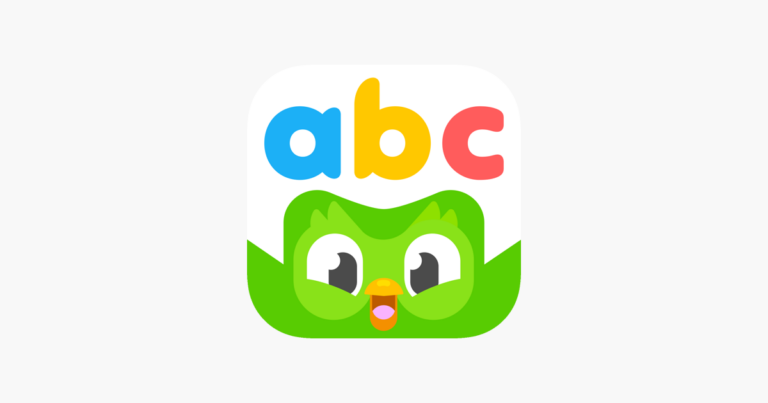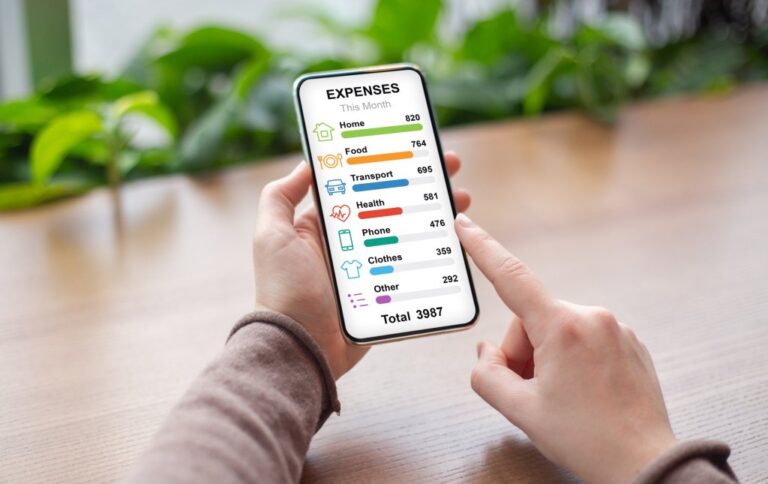In an era where digital technology has become deeply embedded in our daily lives, it’s no surprise that children are growing up surrounded by smartphones, tablets, and the internet. Whether it’s for virtual classrooms, video games, social media, or streaming content, kids today are more connected than any generation before them. While this digital immersion presents countless opportunities for learning and creativity, it also introduces a host of new challenges—especially for parents. Ensuring a child’s online safety has become one of the most urgent responsibilities for modern families.

With children spending increasing amounts of time online, the internet has evolved into a double-edged sword. On one side, it’s a vast resource of educational content, entertainment, and global connectivity. On the other, it opens doors to a variety of dangers—cyberbullying, exposure to explicit content, online predators, privacy breaches, and addictive behavior. For parents who wish to navigate this complex landscape with confidence, parental control apps have become not just useful tools, but absolute necessities.
The purpose of this guide, aptly titled “Secure Your Child’s Digital World: The Ultimate Guide to Choosing the Best Parental Control App,” is to arm parents with the knowledge and tools they need to make informed decisions in this space. Through a detailed exploration of the features, benefits, and limitations of top-rated parental control apps, this piece aims to demystify the selection process and provide actionable insights.
As we progress through this guide, you’ll gain a deeper understanding of how parental control applications function and how they can be integrated seamlessly into your family’s digital routine. These apps can help parents manage screen time, block access to harmful websites, monitor app usage, track physical location, and even provide usage reports to understand digital habits. More advanced tools may also offer real-time alerts, safe search enforcement, social media monitoring, and geofencing capabilities.
Beyond simply listing app names, we’ll help you evaluate what makes an app genuinely effective—looking closely at compatibility (iOS, Android, Windows, etc.), user interface, customization options, and most importantly, security and privacy protocols. After all, the goal isn’t just about restricting access; it’s about empowering both parents and children to engage with technology in healthier, safer ways.
Moreover, we’ll also touch on the emotional and ethical aspects of digital parenting. How do you set digital boundaries without eroding trust? How can open conversations complement technological safeguards? And what are the signs your child is being affected by negative online experiences?
Ultimately, this guide is more than a technical checklist—it’s a holistic approach to raising responsible digital citizens. Whether you’re a first-time parent venturing into this space or someone looking to upgrade from a basic monitoring app, you’ll find valuable perspectives and practical advice throughout.
So, let’s begin the journey to securing your child’s digital world—one click, one app, one conversation at a time.
Understanding the Need for Parental Control Apps
In today’s digital landscape, technology plays a central role in our daily lives — and that includes the lives of our children. From school assignments to social interactions, kids are increasingly immersed in digital environments. While this offers incredible opportunities for learning and connection, it also introduces significant risks. The internet is vast and largely unfiltered, exposing young users to inappropriate content, online predators, cyberbullying, and other digital threats. As a result, the need for effective parental control apps has never been more critical.
Parental control applications provide a much-needed layer of oversight in a child’s digital life. These tools empower parents to monitor, guide, and safeguard their children’s online activities — not to impose rigid restrictions, but to help them navigate the internet safely and responsibly. With the right app in place, parents can view what sites their children are visiting, limit access to unsuitable content, set screen time boundaries, track device usage, and even pinpoint the location of their child’s smartphone.
This combination of monitoring and management enables parents to create a digital environment that aligns with their family values while also encouraging a healthy relationship with technology. More importantly, these apps give parents peace of mind, knowing they can protect their children from dangers that may not always be visible at a glance.
Choosing the Right App
With countless options on the market, choosing the ideal parental control app can feel overwhelming. Not all apps are created equal, and each offers a unique combination of features, compatibility, and user experience. It’s important to start by identifying what your specific needs are. For example, are you primarily concerned with limiting screen time, blocking explicit content, or tracking your child’s physical location?
Once you understand your goals, look for an app that aligns with your family’s lifestyle and tech usage. Pay attention to the platform compatibility — some apps only work on Android or iOS, while others offer cross-platform functionality for mixed-device households. Additionally, consider whether the app allows monitoring across multiple devices if you have more than one child.
Ease of use is another essential factor. The most effective parental control tools are the ones you can set up and manage without technical headaches. Look for apps with intuitive dashboards, straightforward settings, and clear activity summaries.
Well-regarded apps in this space include:
-
Net Nanny – Known for its real-time internet filter and intuitive interface.
-
Norton Family Premier – Offers comprehensive web monitoring and location tracking.
-
Qustodio – A favorite among parents for its strong time management tools and social media monitoring.
These options stand out not only for their robust features but also for the trust they’ve earned in the parental tech community.
Key Features to Look for in a Parental Control App
When evaluating different parental control apps, it’s essential to know which features make a real difference in managing your child’s digital experience. Here are the core features to prioritize:
-
Content Filtering: A fundamental feature that automatically blocks inappropriate or age-inappropriate websites and content. Some advanced apps allow parents to customize filters based on categories like violence, adult content, or social media platforms.
-
App Blocking: With this functionality, you can restrict or completely block access to certain apps — whether it’s games during study time or messaging apps during bedtime.
-
Location Tracking: Many apps now offer GPS-based tracking that allows parents to see their child’s real-time location or get alerts when they enter or leave designated safe zones, such as home or school.
-
Screen Time Management: This feature enables you to set daily or weekly screen time limits, schedule “device-free” times (like during homework or family dinners), and monitor how much time your child is spending on individual apps.
-
Activity Reports: Regular insights into your child’s browsing history, app usage, search terms, and more. These reports help you spot potentially risky behavior and open up opportunities for meaningful conversations.
Some apps also offer more advanced capabilities, such as YouTube monitoring, call and SMS logging, geofencing, and even panic buttons that notify parents if a child feels unsafe. While not every parent needs all of these features, having access to a wide range of tools gives you the flexibility to adapt as your child grows and their digital habits evolve.
Bringing It All Together

Ultimately, parental control apps go far beyond simple surveillance—they are tools of protection, education, and partnership. Just as children need guidance when crossing the street or navigating new social situations, they also need support and structure as they explore the digital world. These apps provide a digital framework that helps parents set healthy boundaries, teach responsible online behavior, and gradually cultivate digital literacy that will serve children for life.
More than just monitoring, these tools enable parents to foster open conversations about internet use, personal safety, and online ethics. They encourage collaboration, not control—giving children the room to grow while keeping them safe from inappropriate content, online predators, or time-wasting distractions. When implemented thoughtfully, parental control apps become an extension of mindful parenting in the modern age.
Choosing the right app may require a bit of time, research, and reflection, but it’s an investment that yields long-term peace of mind. Whether your goal is to stay informed about your child’s social media interactions, ensure school assignments aren’t overshadowed by digital distractions, or keep tabs on your child’s location throughout the day, there’s a solution tailored to your needs.
Parental control apps aren’t about limiting freedom—they’re about empowering children to explore the online world with confidence, safety, and support.
Compatibility and Ease of Use
It’s also crucial that the parental control app you choose is compatible with your child’s device(s). Some apps are designed for specific operating systems like Android or iOS, while others are universal. The interface should be user-friendly and intuitive, allowing you to navigate through the app and use its features without any difficulties.
Setting Up the App and Educating Your Child
Once you’ve chosen the best parental control app, the next step is setting it up. Most apps come with a comprehensive guide on how to install and configure them. It’s important to customize the settings based on your child’s age, maturity level, and online habits.
In addition, it’s crucial to educate your child about internet safety. Discuss the dangers of the internet and explain why it’s important to use these controls. Encouraging open communication about online safety can help your child understand the necessity of these measures and even cooperate with them.
Balance is Key
While parental control apps are essential in ensuring online safety for children, it’s crucial to strike a balance. Overly strict controls can stifle your child’s curiosity and hinder their ability to learn and explore. At the same time, a lack of controls can expose them to harmful content. Thus, finding a balance between safety and freedom is key to a positive online experience for your child.
Regular Monitoring and Adjustments
Effective digital parenting doesn’t stop at installing a parental control app. Regular monitoring and adjustments are necessary to ensure that the controls remain effective as your child grows and their online habits change. Most apps provide regular reports on your child’s online activity, which can help you understand their behavior and make necessary adjustments.
Privacy Concerns
While using parental control apps, it’s important to consider your child’s privacy. It’s a good practice to inform your child that they are being monitored and explain why it’s necessary. This can help build trust and understanding between you and your child.
Remember, the primary goal of using parental control apps is not to invade your child’s privacy but to protect them from potential online threats and guide their online behavior.
Understanding the Legal Aspects
Before implementing a parental control app, it’s vital to understand the legal implications. Different countries have different laws regarding digital monitoring and privacy. Therefore, it’s crucial to familiarize yourself with your local laws to ensure you’re using the app legally and ethically.
Final Thoughts
Securing your child’s digital world is a responsibility that all modern parents must embrace. A parental control app is an invaluable tool in this endeavor, but it’s only as effective as the strategy behind its use. Remember, open communication, regular monitoring, and respect for your child’s privacy are just as important as the technology itself. With the right approach, you can ensure that your child enjoys the digital world safely and responsibly.
Conclusion
In conclusion, the digital world presents a myriad of opportunities and threats to our children. Therefore, the need for an effective parental control app is more critical than ever. The best parental control app should not only offer comprehensive features like location tracking, web filtering, app blocking, and screen time management but also provide easy usability and robust security. It’s about striking the right balance between granting our children the independence they crave and ensuring their online safety.
Remember, no app can substitute for open communication and guidance. Therefore, these tools should be used in conjunction with educating your child about responsible online behavior. In the end, the goal is not to restrict but to guide and protect.
Choosing the best parental control app can be overwhelming, given the plethora of options available. But with careful consideration of your child’s age, their digital habits, and your family values, you can find an app that fits your specific needs. Secure your child’s digital world today for a safer, more controlled online experience. Remember, the digital wellbeing of our children is an investment in their future.
In the age of digital parenting, equip yourself with the right tools, and navigate this journey confidently. You’re not just choosing an app; you’re securing your child’s digital world.



